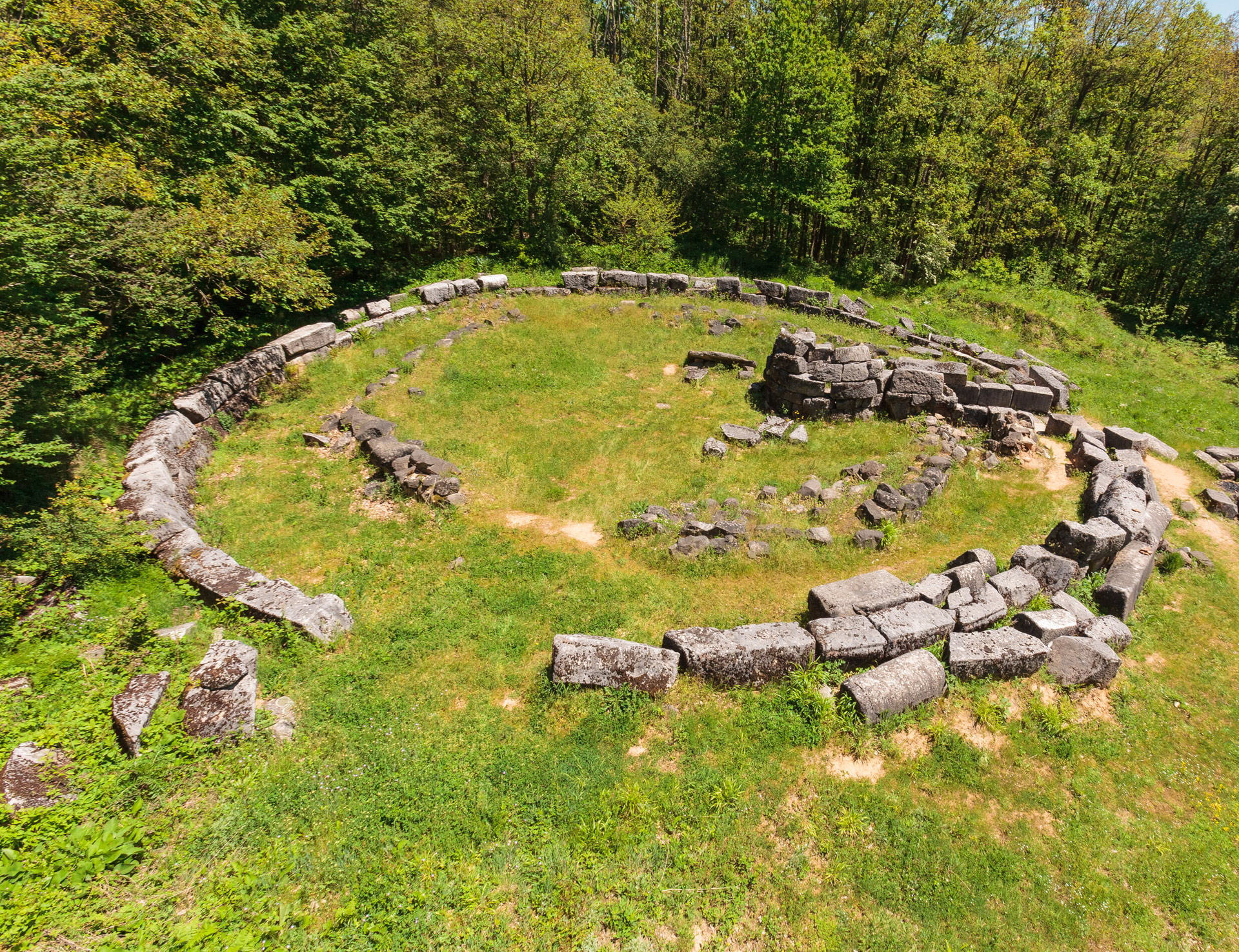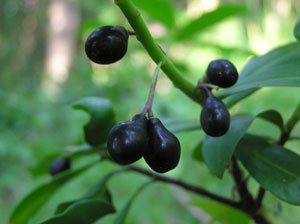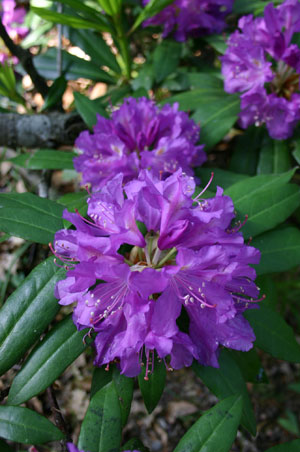
Reserves
Vitanovo Reserve (1112,4 ha)
It is located 9 kilometers from Malko Tarnovo and 5 kilometers from Brashlyan, near the northern slopes of the main Rezovsko ridge along the border with Turkey. The altitude (400 to 600 m) determines the significant difference of the vegetation in this area compared to that of the other reserves in Strandja (Silkosia and Uzunbuzhak). The reserve area encompasses Quercus polycarpa, Quercus cerris, Quercus frainetto (species of Quercus) and Fagus orientalis forests of average age - 80 to 110 years, with typical undergrowth of south-euxeinos vegetation– Daphne mezereum, laurel, Ilex colchica, and Vaccinium artctostaphylos.
The pure beech forests are located on the wet gorges and the lower parts of the slopes with northern exposure. Slightly above them are the mixed beech-hornbeam –oriental durmast forests (on the upper streams of the gorges).
The reserve is one of the few conserved natural habitats of the red deer. The pure waters of Mechi dol river are rich in brown trout.
The local toponymy - Mechi dol, Mechkobievo, Mechovi meadows - suggests that bears inhabited these lands in the recent part.
Entering the reserve is only possible with a special permission, issued by the Bulgarian Ministry of Environment and Water, for conducting research or for specialized tourism under strict rules and routes.
 Uzunbudzhak Strandja Reserve(“Lopushna,” 2581,5 ha)
Uzunbudzhak Strandja Reserve(“Lopushna,” 2581,5 ha)
It is located fully behind the border facility of the border with Turkey. The reserve took the name Uzunbudzhak upon its establishment, but is nowadays called Lopushna in the scientific literature. One of the oldest beech-oak forests in Strandja are to be found here. Particularly characteristic for the reserve are the forests with evergreen undergrowth of Rhododendron ponticum. Commonly found rare and protected species here are the laurel, Ilex colchica, Hypericum grandiflora, Valeriana, Pyracantha coccinea, Vaccinium arctostaphylos, Asplenium scolopendrium, and others.
Almost all reptile species that are typical for Strandja can be found in the reserve, including European legless lizard, Cyrtopodion kotschyi, Montpellier snake and leopard snake. Commonly found are also the following mammal species – doe, deer, wild-boar, fox, jackal, wild cat, marten, and wolf.
The lynx was also commonly found in these areas up until the 1930s, but the penetration of man into the mountain recesses of Strandja has contributed to the extinction of this beautiful and mysterious predator.
Sredoka Reserve(607,8 ha)
It is situated on the steep northern slopes of the lower stream of Mechi dol river. Sredoka reserve was created in order to preserve the vast century-old beech forests and the habitats of rare and protected vegetal species.
The following endemic species, typical for Strandja, can be found here – the Pyracantha coccinea, the laurel, and the Hypericum grandifora. Particularly valuable is the large habitat of the laurel, which is located in the central part of the reserve, as well as the compact groups of Ilex colchica, individual species of which can reach height of 6 m and diameter of 10 cm.
Sredoka is the only reserve in Strandja, which has numerous meadows and open spaces – kalunacs and pastures.
The reserve permits research activities on its territories as well tourist visits along three strictly regulated and marked tourist routes.
 Tisovitsa Reserve in Strandja (749,3 ha)
Tisovitsa Reserve in Strandja (749,3 ha)
It is situated in a mountainous, difficult to access region in the catchment basin of Tisovitsa river, which is how the reserve got its name. It was established in order to preserve the typical for Strandja venerable oak-beech forests with evergreen shrubs, part of the south-euxeinos flora. Characteristic representatives of this flora are the Rhododendron ponticum, the Ilex colchica, the Daphne pontica, the Epimedium pubigerum, the Hypericum androsaemum, the Mespilus, the beech, the Quercus polycarpa, and others.
One of the deposits of yew is located on the territory of the reserve – found in a beech plantation with Rhododendron ponticum. The river and the reserve are named after this species, probably due to its widespread distribution in the past.
Tisovitsa has archeological and historical value as well – remnants of an ancient Thracian era have been found in the Pisan kamuk, Kalderamat, and the Marzevska citadel areas.
Silkosia Reserve (396 ha)
The first reserve in Bulgaria, established in 1933. It is situated 2 kilometers north of Kosti village and 1 kilometer east of Bulgari village. Around 260 species of land plants have been found in the reserve. It conserves the most typical and relict beech and oak forests with undergrowth of evergreen shrubs – Rhododendron ponticum, laurel, Ilex, Daphne pontica. The average age of the trees is 120 – 130 years, and in some case – over 200 years. Pruned heather forests can be seen on the poorer soils of its southern slopes.
The ornithofauna is extremely diverse. The following bird species are typical for the reserve – jay, oriole, common nightingale, Sardinian warbler, common whitethroat, different species of woodpecker and rapacious birds.
Tourist visits are only permitted along the marked trail and only with escort – the inspector-guard of the reserve.
According to the Law on Protected Areas, the security, management and control of all the reserves on the territory of Strandja Nature Park are to be carried out by the Regional Inspectorate of Environment and Water in Burgas, under the supervision of the Bulgarian Ministry of Environment and Water.
